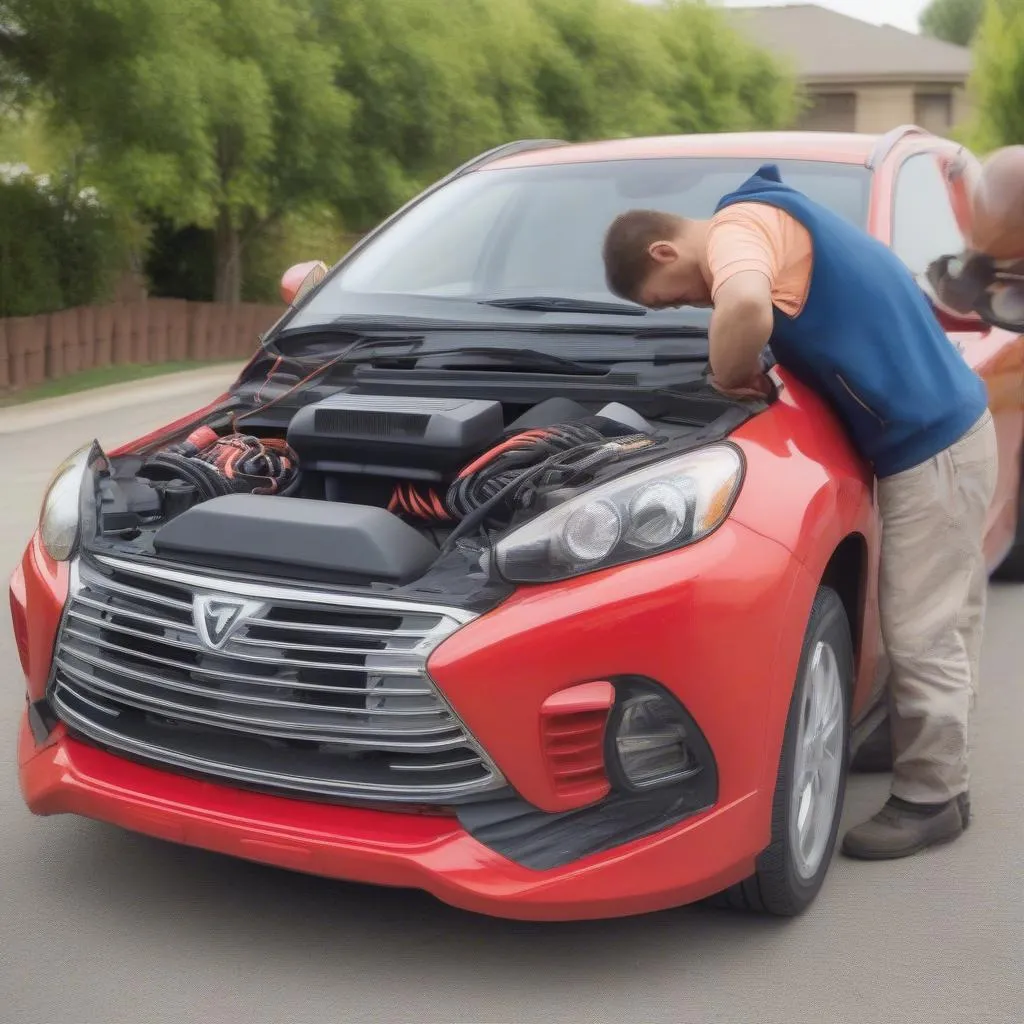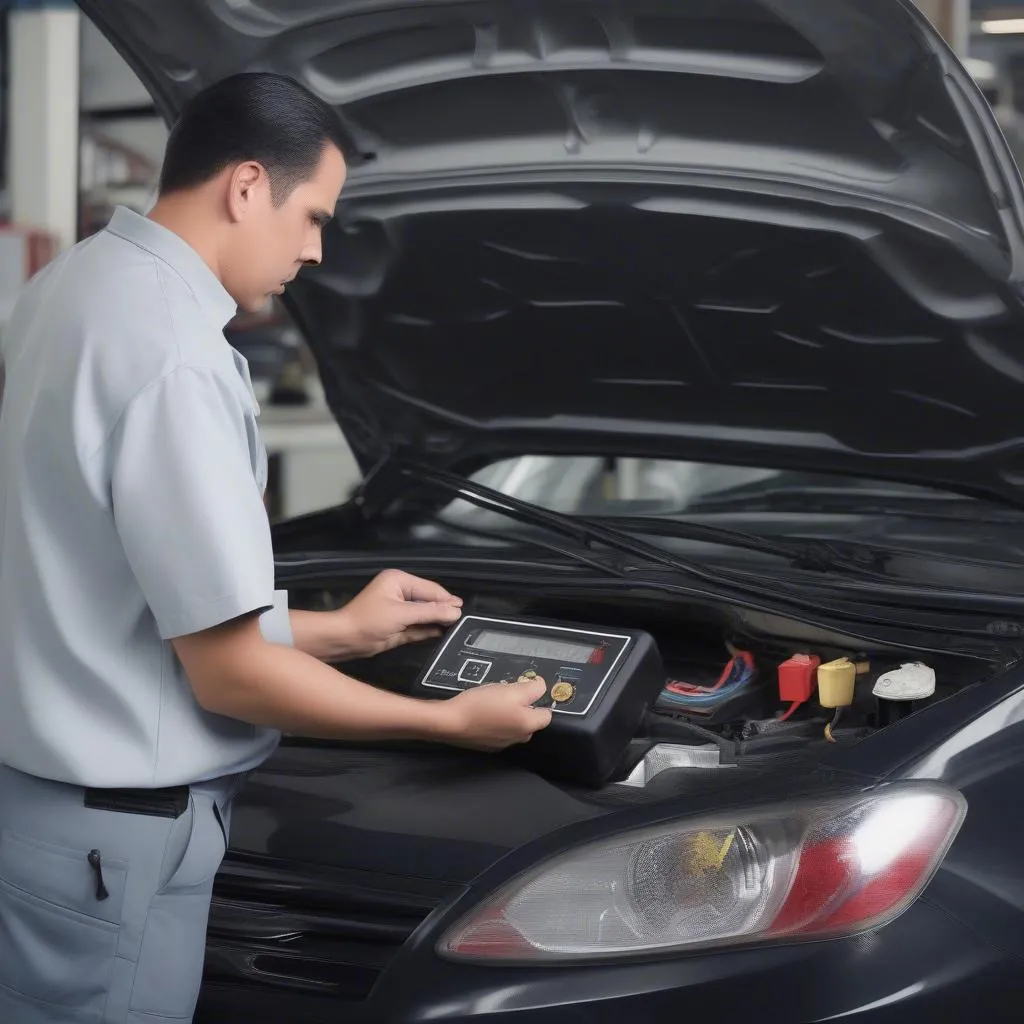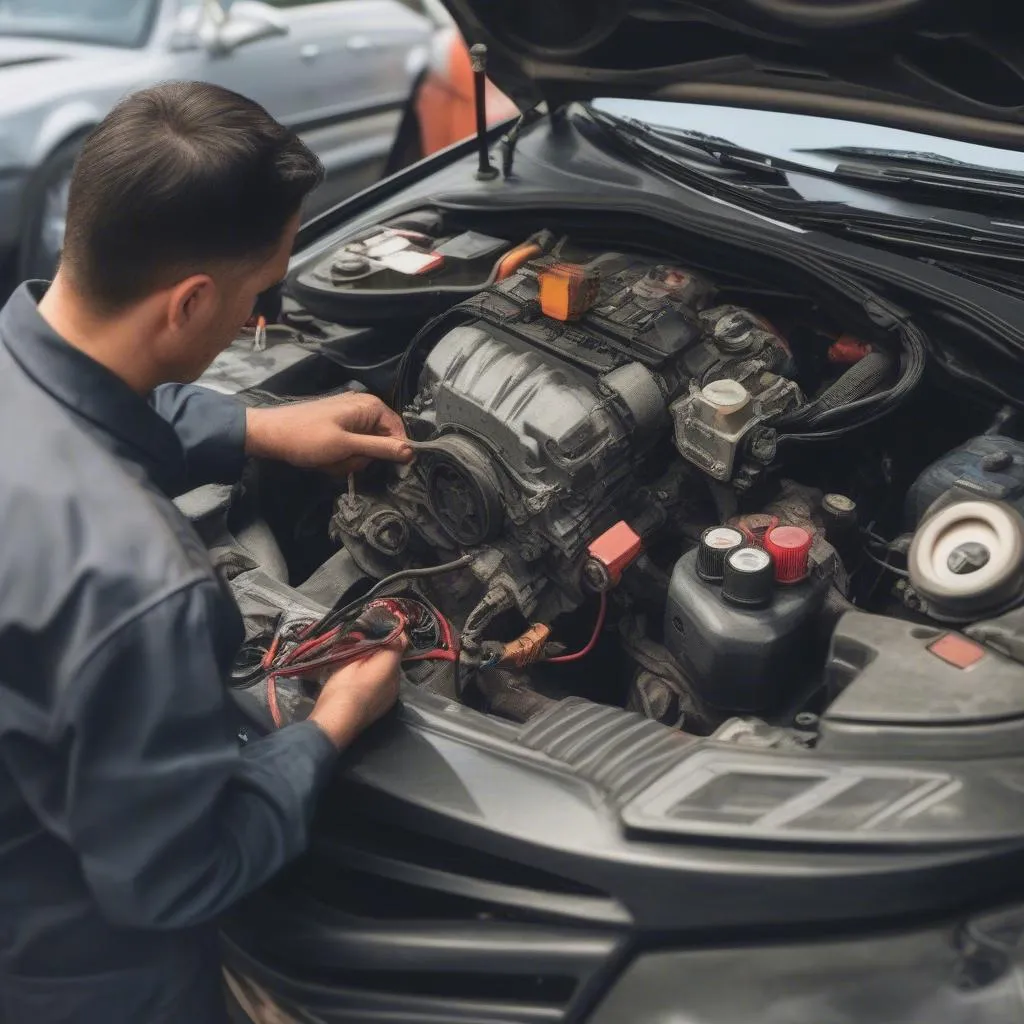It’s a frustrating situation: you turn the key, the engine cranks, but your car refuses to start. You try again, and again, but no luck. Then, a friend arrives with jumper cables, and your car magically springs to life. But why does your car only start with a jump?
Understanding The Problem
A car only starting with a jump typically points to a problem with the battery. This might not be the only reason, and there are other possibilities that could be contributing to the issue.
Let’s break down the situation from different perspectives:
Mechanic’s Perspective:
A mechanic would likely look for the cause of the battery’s inability to hold a charge. They might test the battery’s capacity, check the alternator’s output, and inspect the wiring for any damage or corrosion.
Technical Perspective:
A car battery’s primary function is to provide enough power to start the engine. When the battery is discharged, it can’t provide enough power to start the engine. The battery’s charge is then restored by the alternator while the engine is running.
Economic Perspective:
A battery that constantly needs to be jumped might indicate a bigger problem. This can lead to frequent repair costs, towing fees, and potentially even a new battery purchase.
Finding the Root of the Problem
The most common reasons your car only starts with a jump include:
- Dead Battery: This is the most likely culprit. If the battery is completely discharged, it won’t have enough power to start the engine.
- Faulty Alternator: The alternator charges the battery while the engine is running. If the alternator is malfunctioning, the battery won’t receive a charge, leading to frequent jump starts.
- Battery Cables: Corrosion or damage in the battery cables can prevent the battery from supplying power to the starter.
- Starter Motor: A faulty starter motor can prevent the engine from turning over, even if the battery has a good charge.
- High Electrical Draw: If there’s a significant electrical draw from a parasitic component (like a light left on), it can drain the battery.
- Low Battery Capacity: As batteries age, they lose their ability to hold a charge, leading to more frequent jump starts.
Here’s how to troubleshoot these issues:
1. Check the Battery:
- Visual Inspection: Look for any signs of corrosion, swelling, or damage on the battery terminals or case.
- Battery Voltage Test: Use a voltmeter to measure the battery voltage. A healthy battery should have a voltage reading of around 12.6 volts when not running. If the voltage is below 12 volts, your battery is likely discharged.
- Load Test: A load test measures the battery’s ability to deliver a large amount of current. A mechanic can perform this test.
2. Check the Alternator:
- Voltage Test: With the engine running, the alternator should produce around 13.5 to 14.5 volts. If the voltage is lower, the alternator might be faulty.
- Belt Inspection: Check the alternator belt for wear and tear, as a loose or worn belt can prevent the alternator from working properly.
3. Check the Battery Cables:
- Corrosion: Corrosion on the battery terminals can hinder the flow of electricity. Clean the terminals with a wire brush and a baking soda solution.
- Damage: Look for any signs of damage or fraying in the battery cables. Replace any damaged cables.
4. Check the Starter Motor:
- Clicking Sound: If you hear a clicking sound when you try to start the car, the starter motor may be faulty.
- Starter Test: A mechanic can test the starter motor to determine if it’s working properly.
5. Identify High Electrical Draw:
- Parasitic Draw Test: A mechanic can perform a parasitic draw test to identify any components that are draining the battery when the car is off.
What if the problem is a low battery capacity?
This means the battery is old and no longer holds a charge as efficiently. The solution is to replace the battery.
Other Common Questions:
- Can a dead battery be recharged? Yes, most dead batteries can be recharged with a battery charger.
- What are the signs of a faulty alternator? The most common signs of a faulty alternator are a dim dashboard light, a warning light, and the battery light turning on while the engine is running.
- How long does a car battery typically last? The lifespan of a car battery varies depending on the type of battery, driving conditions, and maintenance. Generally, a car battery lasts 3-5 years.
- What should I do if my car battery is leaking acid? If your battery is leaking acid, don’t touch it. Wear gloves and safety glasses, and contact a professional for assistance.
- Can I jump start my car with a different type of battery? It’s best to use a battery of the same type and voltage for jump starting. Using a different type of battery can damage your car’s electrical system.
What to do next:
If your car continues to only start with a jump, it’s important to diagnose the issue. You can try to troubleshoot the problem yourself by following the steps outlined above, or you can take your car to a mechanic for a professional diagnosis.
 Jump Starting a Car
Jump Starting a Car
 Checking a Car Battery
Checking a Car Battery
 Checking a Car Alternator
Checking a Car Alternator
If you’re experiencing problems with your car’s electrical system, don’t hesitate to reach out. We offer professional car diagnostic services, including Dealer Scanner for European cars. Our team is available 24/7 to assist you. You can contact us via WhatsApp: +84767531508.
Don’t forget to share your experiences with us in the comments below!